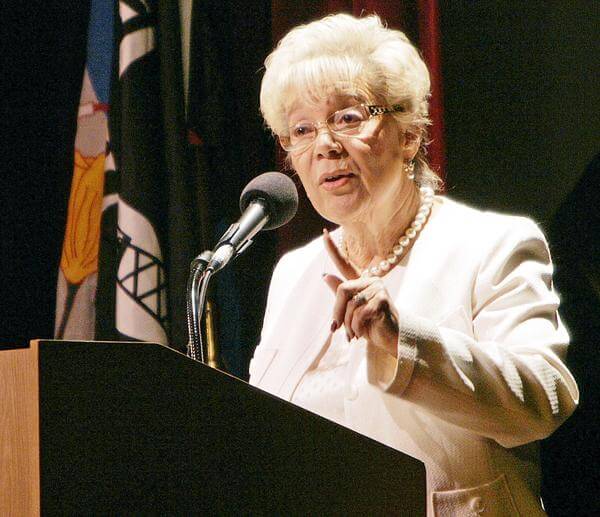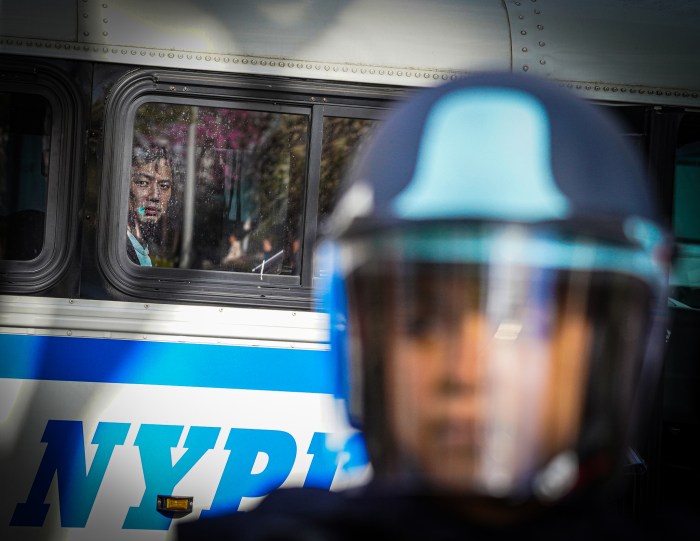By Nathan Duke
At age 16, Helen Marshall became the caretaker for her younger sister and was nearly forced to choose between an education and going to work. In 2001, she became the first black borough president in Queens and the caretaker of more than 2 million people.
Marshall, who has lived in East Elmhurst for more than 50 years, is now looking ahead to a third term in office with hopes for continued improvements in borough education, the construction of new libraries, upgrades to infrastructure and a better economy.
“I’d like to be able to say I made a difference,” she said. “I consider it a privilege to have been elected by the people of this borough. It is one of the greatest achievements of my life.”
Her parents emigrated from Guyana and met in the United States. Her father was trained as a painter under the Works Progress Administration and remarried after Marshall’s mother died when she and her sister were very young.
Marshall, who was born in Harlem and moved with her family to Corona in the 1950s before settling with her husband in East Elmhurst in 1957, took an interest in education at an early age. Her father died when she was 16, leaving her and her sister to live on their own in a Bronx apartment.
Facing hardships in her early years, the borough president said she was heartbroken when a welfare agent approached her at Morris High School and told her she would have to drop out and find a job.
“School was my life, so I was devastated,” she said. “But the dean of my school said, ‘I expect you to be in school tomorrow.’ She told the people from welfare, ‘This is an ‘A’ student. She needs to stay in school.’ ”
After earning a bachelor’s degree in education from Queens College and giving birth to a daughter, Marshall worked as an early childhood teacher for eight years before becoming the first director of Corona’s Langston Hughes Library in 1969. She held the position for five years and lobbied the state Legislature for the construction of new libraries in the borough.
In 1974, Marshall got her first taste of politics after elected officials representing East Elmhurst convinced her to run as a district leader. Eight years later, she was elected to the state Assembly’s 35th District and worked in that position until 1991.
Marshall was elected to the City Council in 1992 and sat on the city’s governing body until 2001, when she became the second woman voted into office as the Queens borough president and the first African American.
Marshall believes she has helped improve the quality of Queens education during her tenure as borough president, citing 27,000 new school seats created during the past eight years. She said she has also secured large amounts of money for parks and libraries in the borough, kept the landscape of Queens attractive and approved downzoning where it was necessary.
“I’d like it to be said that I made a difference in the way our residents feel about one another,” she said of her legacy. “I hope that people in Queens will not just tolerate one another, but really care about one another.”
Marshall said she is also very proud to have set up the Queens General Assembly, a group of 28 delegates who serve one−year terms and attend monthly meetings at Borough Hall in Kew Gardens. The group, which represents each of the 14 community districts of Queens, holds discussions on issues affecting the various ethnic groups in the diverse borough.
“People have told me that working in that group has changed their life experience,” she said. “It’s been one of the highlights of my life to have worked with them.”
Marshall said she also put an emphasis on promoting Queens as a tourist attraction as well as pushing initiatives to make the borough environmentally friendly.
“I’d like it if people remembered that I stood my ground on the environment,” she said. “I’ve tried to make Queens as green as can be.”
Marshall said she will focus on many of these same issues in her 2009 campaign for a third term in office. She would also like to see capital projects she helped launch in her previous terms come to fruition, such as the controversial Willets Point redevelopment project, the opening of Long Island City’s Frank Sinatra School of the Arts in a new building and a borough cricket park.
“I have so many irons in the fire right now,” she said.
Reach reporter Nathan Duke by e−mail at nduke@timesledger.com or by phone at 718−229−0300, Ext. 156.































